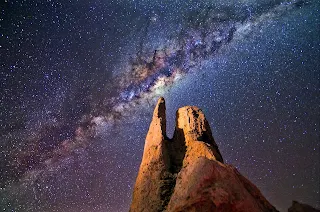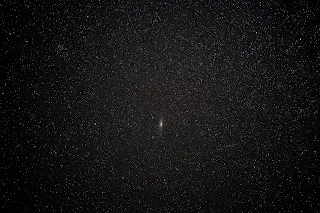WHEN A STAR IS BORN- THE COSMIC DAWN
 |
| Photo by form PxHere |
It is a once in a lifetime opportunity to gaze upon the milky way from the heart of the Namibian Desert. The mesmerizing night sky endowed with countless bright and dim stars leaves an everlasting impression in our minds. Those twinkling stars separated by billions of light-years in space and time make us a bit insignificant in this vast cosmic ocean.
Looking at the night sky is like sometimes traversing back in time. The starlight reaching us has traveled for millions, perhaps billions of years through space and time. Yet, all the stars you see tonight are only part of our very own galaxy. What about the rest? Well, they haven't had the time enough to reach us!
One of the distant stars visible to the unaided eye is 'DENEB' in the constellation of Cygnus, at a distance of 2616 light-years from Earth. Thus, the light that reaches us today started its journey 2616 years ago. So we are seeing Deneb as it was 2616 years ago. And how's it now? We won't know that until the year 4636. I would have lost my eyesight till then. Maybe someone else would see? Who knows?
 |
| Photo by form PxHere |
That faint beacon is the famous Andromeda Galaxy-our galactic neighbour. This galaxy is at a distance of 2.25 million light-years. And similarly, we are also seeing this one as it was 2.25 million years ago. Its light left itself when humans were still jumping off trees and sounded like a chimp.
Before the ''Dark Ages'':
The initial temperature stayed beyond a whooping trillion degrees Kelvin. And it gradually came down to a billion degrees within the first 100 seconds. Electrons and anti-electrons annihilated each other creating photons, while protons and neutrons combined to deuterons. Eventually, the deuterons combined to create helium. At that time, the universe was a foggy dense plasma of 75% hydrogen, 25% helium, with traces of lithium and other elements. With photons being trapped within the hot soup of ionized particles, the universe glowed with a yellow-orange hue.
380,000 years passed by. This time the temperature had dropped to 4000-3000 degrees Kelvin, with photons being finally released. The cosmos gradually became translucent (photon decoupling), while protons and neutrons combined to form neutral atoms of hydrogen. The Cosmic Microwave Background (CMB) was established which is known today as the afterglow of the violent big bang. Nevertheless, the universe remained eternally dark for the next 100-300 million years until the first stars were born.
The fiery birth of our universe was followed by a period of total darkness. Although, the big bang is a complete mystery one thing remains certain. The universe was way different than what we see today. Back in the infinite past all matter and energy of our present-day were bounded within a dot. And, that dot expanded to trillions of times its original volume within a trillionth of a second by a phenomenon known as "The Cosmic Inflation".
The initial temperature stayed beyond a whooping trillion degrees Kelvin. And it gradually came down to a billion degrees within the first 100 seconds. Electrons and anti-electrons annihilated each other creating photons, while protons and neutrons combined to deuterons. Eventually, the deuterons combined to create helium. At that time, the universe was a foggy dense plasma of 75% hydrogen, 25% helium, with traces of lithium and other elements. With photons being trapped within the hot soup of ionized particles, the universe glowed with a yellow-orange hue.
 |
| NASA/WMAP Science Team / Public domain |
380,000 years passed by. This time the temperature had dropped to 4000-3000 degrees Kelvin, with photons being finally released. The cosmos gradually became translucent (photon decoupling), while protons and neutrons combined to form neutral atoms of hydrogen. The Cosmic Microwave Background (CMB) was established which is known today as the afterglow of the violent big bang. Nevertheless, the universe remained eternally dark for the next 100-300 million years until the first stars were born.
The first billion years since the big bang is what cosmologists call the Cosmic Dark Ages. When did the Dark Ages actually end is still under questioning. But the Dark Ages quietly laid the plans of a dynamic universe for the far future. The unborn stars waited for their turns to finally shine and flood the cosmos with warmth and light.
Something happened unexpectedly!
Something happened unexpectedly!
The Dark Ages prevailed from 380,000 years to 1 billion years until the start of the formation of modern galaxies. During this phase of cosmic nurturing, the universe was pretty featureless. The cosmos was expanding slowly. The ionized hydrogen, helium, and lithium gradually transformed into molecules which in turn formed the gas clouds. Though, the hydrogen molecules were living in peace something happened to an unfortunate one.
That atom almost unknowingly attracted other molecules and gradually loads started to fall towards a certain place. It is speculated that maybe gravity, quantum fluctuations, or density fluctuation caused an anomaly in those molecular clouds. The gaseous structures got clumped together in certain regions to form primordial galaxies (protogalaxies to be precise) which became the stellar nurseries for star formation. More and more gas molecules got stuck in a place due to gravity. But when the force of gravity couldn't support the weight of the infalling matter, the gaseous core got ignited. Thus began the journey of star formation.
The molecular cloud separated and collapsed into smaller clouds that would later become a star. The core collapsed faster than the outer layers of gas. It started to rotate and conserve angular momentum. As the core reached a temperature of 2000 degrees Kelvin the hydrogen molecules got ignited and separated into hydrogen atoms. The hydrogen atoms now transformed into helium atoms by the nuclear fusion reaction. Gradually, the core temperature climbed to 10,000 degrees kelvin and the outpouring ultraviolet radiation charged(ionized) the surrounding outer layers of gas. A protostar was finally born with so much energy that it glowed in the ultraviolet spectrum. But visible light? That's still locked in the core waiting for the universe to celebrate its 200-300 millionth birthday.
And, there was light!
The protostars were huge. When their size became 30 times that of our sun, radiation pressure and gravity caused a tussle in its core. With time, the radiation pressure and gravity settled enough for the star to undergo a sustained fusion reaction. The outer layers now glowed in the infrared spectrum. When the core was about the size of our sun, radiation pressure acted against the inward pull of gravity. Eventually, the outer layers were dispersed due to that radiation pressure and the visible light from the star found its way. Though the universe was dark, isolated patches of baby stars bathed our universe with their warmth. And their evolutionary life began.
Scientists speculate that the primordial stars were ginormous in size dwarfing our star by a factor of hundreds, perhaps thousands. Their luminosity exceeded our star by millions or billions of times. They lived young and died hard in cataclysmic supernovae, while some collapsed to form black holes. This was the picture after a billion years since the big bang. The primordial stars were a spectacular sight to behold as they were shining in the blues! Here's a comparison.
 |
| Photo created from my computer |
As those stars exploded they seeded the universe with heavier elements viz., carbon and nitrogen, and marked the beginning of our modern universe. From 1 billion years galaxies started forming, with more stars than ever and the universe became a dynamic place. None of those primordial stars survive today. But the Hubble Telescope has found some very old candidates that can tell us more about those primordial giants. The first stars brought dynamism into this universe and rolled the cosmic wheel that would create us. Just like someone said, "The universe is out there, waiting for you to discover it".


Comments
Post a Comment